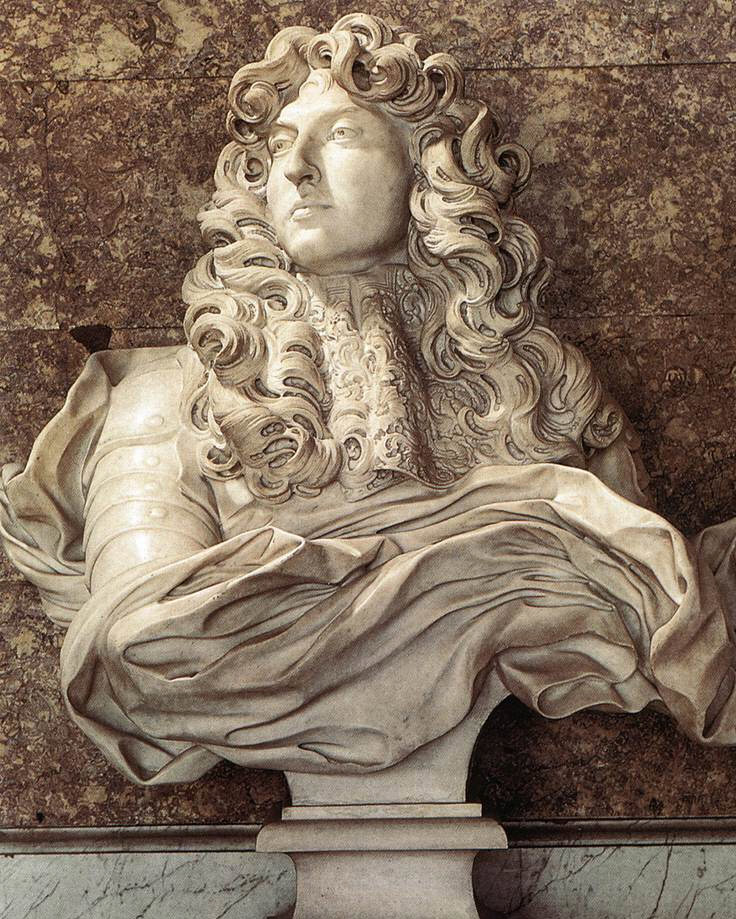| Bust of Louis XIV | |
|---|---|
 |
|
| Photo by: Louis le Grand CC | |
| Artist | Gian Lorenzo Bernini |
| Year | 1665 |
| Medium | Marble Sculpture |
| Location | Versailles Palace, Versailles |
| Dimensions | H:105 cm W:99 cm D:46 cm |
| H:41.3 in W:39 in D:18.1 in | |
| Gian Lorenzo Bernini Artworks | |
| Apollo and Daphne | |
| David | |
| Ecstasy of Saint Teresa | |
| Bust of Louis XIV | |
| Fontana dei Quattro Fiumi | |
| Medusa | |
| Complete Works |
The Bust of Louis XIV was created by Gian Lorenzo Bernini, who was an Italian artist. The piece was made in 1665 when the artist visited Paris for a diplomatic exchange. He was to create new pieces of art for the Louvre Palace, but Louis XIV wanted him to also make a portrait bust. A portrait bust is a carved marble portrait that shows the subject with all of their features. While Gian Lorenzo’s designs for the Louvre Palace were not enjoyed; the portrait bust of Louis XIV was acclaimed as a great piece of art and came to later be known as “the grandest piece of portraiture of the baroque age.”
How was the piece created?
During the creation of this piece, Paul Freart de Chantelou kept the process documented. After Bernini had chosen the marble, he made small clay models and drawings of the king. Unfortunately, the drawings are not around today. After this step, Bernini worked on the marble when he had sittings with the king. After countless hours of carving the marble, the bust was finally finished.
What does the bust look like?
The bust shows the characteristics of the king in beautiful marble. The hair surrounding the king’s face is curly and long, his face is showing a straight and thoughtful expression and there is a detailed scarf around his neck. Two arms are visible, but the upper body is covered by the scarf until the bust comes to an end with dramatic drapery. The bust shows the king as a large and grand man, although he was actually small in real life. It sits on a large globe the Bernini created to make the king look grander and more majestic.
Where is it located?
Although the bust was located in Louvre Palace, it was moved to the Palace of Versailles in the 1680’s, where many tourists can see it in person today. Many plaster casts have been made as well, one of which is located in Washington state.